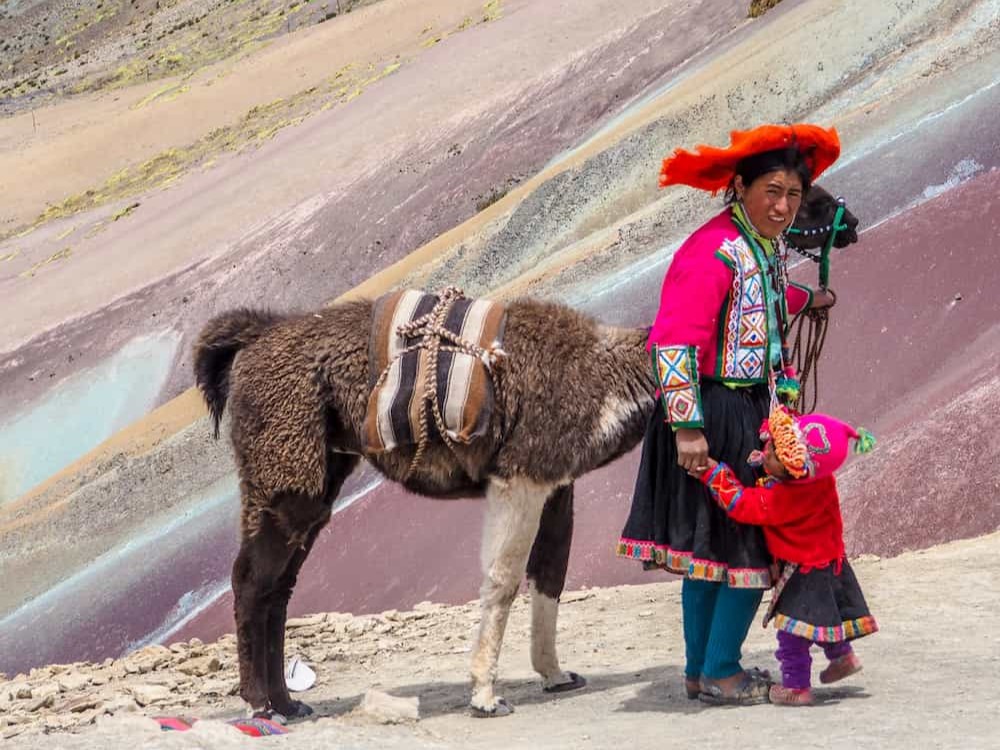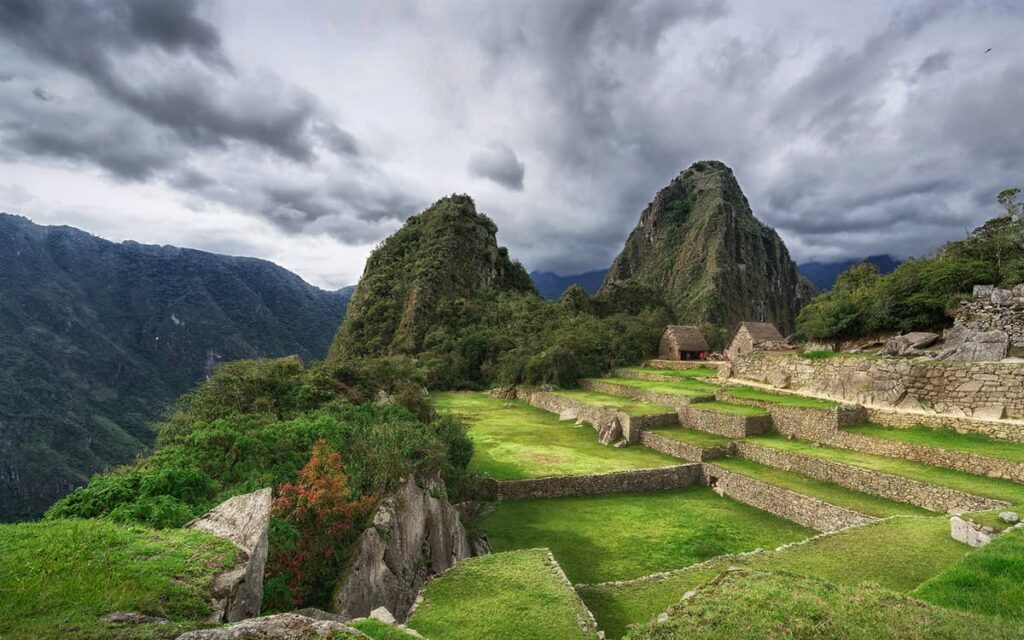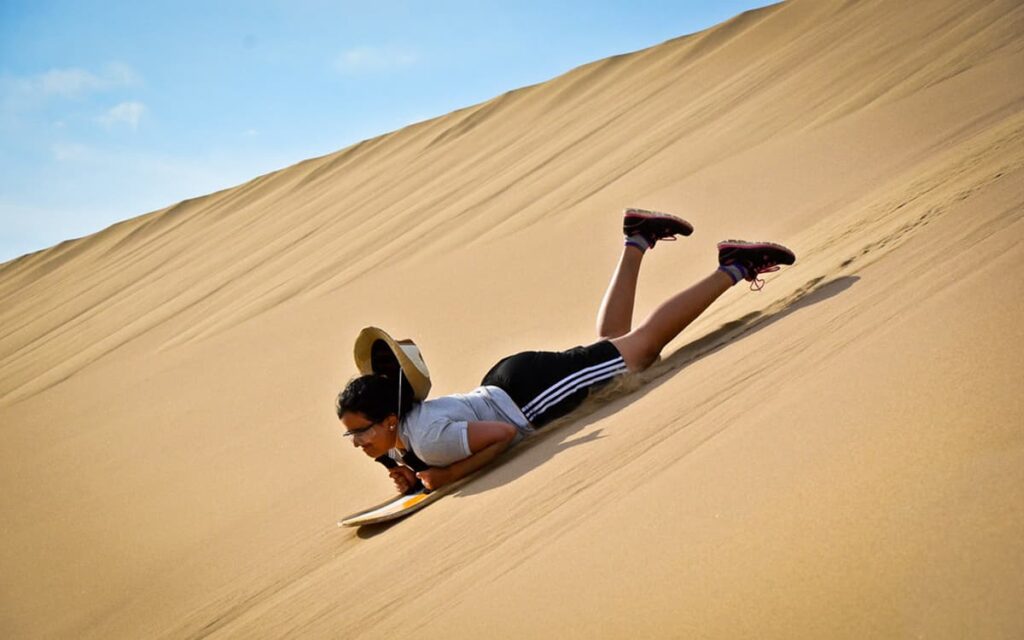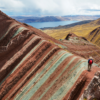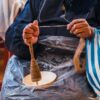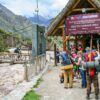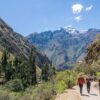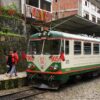If we talk about Ollantaytambo, surely the first thing that comes to mind is the train station. But this district of Cusco has much more: its cobbled streets still preserve Inca walls and roads. In addition, in this place is one of the most important archaeological sites of the Inca empire: its incredible fortress.
Ollantaytambo is known as the Living City, because among its narrow streets you can perceive the magic of the town, and this is due to the fact that the inhabitants, despite time, have not stopped practicing their traditions, thus inheriting from their descendants everything they could learn from your ancestors.
The living city is part of the famous Sacred Valley of the Incas, this beautiful Archaeological Site, is located to the south on the Urubamba River and is surrounded by snow-capped mountains in the Cusco region.
To get to this famous Archaeological Site, you must go through approximately 72 kilometers from the city of Cusco and 32 km. from Machu Picchu.
What does Ollantaytambo mean?
According to the Quechua culture, the name would come from “OLLANTA”, the name of the Inca captain who was the protagonist of the drama “Ollantay”.
In the Quechua word Ollantaytambo would mean “place to see down” (Ulla -nta-wi).
On the other hand, the word «Tambo» would mean «City that provides accommodation, food or comfort for travelers.»
Altitude of Ollantaytambo
The altitude of Ollantaytambo town is 2,792 meters above sea level (m.s.n.m.).
The altitude of Ollantaytambo archaeological park is located 2,700 meters above sea level (m.a.s.l.)
History
During the mandate of the Inca Pachacútec, the empire invaded, conquered and destroyed everything that was in Ollantaytambo. Starting from the ruins and using the typical Inca architecture, Pachacútec ordered the construction of a new town that became one of the most important bastions of Tahuantinsuyo.
With the construction of the Ollantaytambo fortress, this place became the military, religious and agricultural center of the Inca empire. Thus, when the Spanish arrived, with the Inca Manco Cápac as the highest president, the fight for the invasion of this place began.
During the first years of the conquest, Manco Cápac watched all the movements of the Sacred Valley from the fortress. Thus he was able to find out that the Spaniards were planning their arrival to this place and the Inca, who knew more about the recesses of the valley, managed to surprise and stop them. But Manco Cápac decided to leave Ollantaytambo and take refuge in the Vilcabamba forest, for greater security.
After the departure of the Inca, it was easier for the Spanish to conquer this place, which was left in the hands of Hernando Pizarro in 1540.
What to visit?
At present, Ollantaytambo has no other function than to receive visits from people from all over the world. Its great tourist attraction is due to its almost perfect conservation and to the fact that it is one of the few cities in which Inca urban planning can still be observed.
Ruins of Ollantaytambo
The Ruins of Ollantaytambo is also known as the «Living Inca City» is one of the main entrances to the part of the jungle of Cusco, as well as the entrance to the town of Aguas Calientes, a mandatory step to reach the Sanctuary of Machu Picchu.
Attractions:
- Groups of platforms: From several kilometers before Ollantaytambo, height of the town of Pachar, on both sides of the valley on the slopes of the slopes, we find a grouping of parallel platforms between them, with formidable faces sloping towards the hill with steps that come out embedded in the walls.
- The Forts of Choqana and inkapintay: Choqana is a Quechua word, it indicates where it is demolished or thrown. It corresponds to a pucara or barracks, located two kilometers before Ollantaytambo (going to Cusco), on the left side of the Urubamba river. It was a place of administrative control, signal station, communication and fort; It has a supply of water, food deposits and many enclosures ready for surveillance.
- The Plaza Mañay Raqay also called K’uychipunku: Mañay means order and Raqay means warehouse; it is interpreted as the Plaza de las Peticiones. This name had the Plaza de Ollantaytamboy it maintains it until today; This square is located on the right bank of the Patakancha stream, rectangular in shape, the limiting walls have many doorways.
- The Royal House of the Sun: The Royal House of the Sun or fortress, and Ollantaytambo in its entirety, still preserves the layout of the urban planning of the Incan. It is made up of 17 superimposed terraces, a succession of straight and wide platforms oriented towards the side of the square and the town; the upper group of platforms, runs transversely with respect to the previous group and at a higher altitude.
- The Enclosure of the ten Niches and the Monumental Front: It is the last platform of the Superior Group of Platforms of La Real casa del Sol, the entire wall is made up of two stone canvases, which form a kind of room. This enclosure is incomplete today, the exterior wall and the wall that contained the entrance door were demolished, the foundations still remain and it can be noticed that the cabinets were towards the interior and not like today in the open.
- The Temple of the Sun: It is an impressive architectural complex almost entirely destroyed, the immovable pieces that make up a stone canvas remain that due to its solidity, volume and way of assembling resisted the onslaught of the extirpators of idolatries and also repelled the looters of treasures. It is thought that the whole set formed the Temple of the Sun of which only the western wall has remained, formed by 6 red porphyry stones and between them slats that fit with incredible precision.
- The Ñust’a Bath: It is a beautiful fountain with triple janitor in parallel lines and ravines, sculpted on the front face; the Incas built groups of liturgical sources in every urban center.
How to buy the tourist ticket to enter the ruins of Ollantaytambo?
The entrance to the ruins of Ollantaytambo is included in the Cusco Tourist Ticket. This ticket includes access to this and other tourist attractions such as: Pisac, Sacsayhuaman and Coricancha.
The Cusco Tourist Ticket can be purchased at the authorized offices of Cusco.
- Avenida El Sol 103, Cusco. (Tourist Galleries of. 101).
- At the door of the same archaeological sites (Sacsayhuaman, Coricancha, Ollantaytambo).
Hours of operation ‘Ollantaytambo archaeological site’: from 7 a.m. at 6 p.m. (Every day of the week).
Note: Try to arrive early in the morning. This will avoid the groups of tourists that start arriving at 11 a.m.
If you visit the city of Cusco another impressive destinations that you can visit are the tour to rainbow mountain peru or the humantay lake tour from cusco, which only takes one day. But if you are gonna to stay more days in Cusco, other archaeological places you can know will be the choquequirao trek peru, the salkantay trek to machu picchu, and the classic inca trail 4 days 3 nights.
How to get to Ollantaytambo?
The Ollantaytambo district is located 72 kilometers north of Cusco, in the eastern part of the Sacred Valley.
Traveling on your own: We can take a bus or taxis from Pavitos street in the city of Cusco, this will take us via Chinchero-Urubamba, the distance is 75 km. Approximately 2 hours of travel.
Hire a travel agency: This is definitely the safest and most recommended option, because they take care of the transfer to this archaeological zone in a better way and solve any inconvenience in a better way, thus leaving you to enjoy only the trip.
We recommend that, if you are going to take the train in the morning, you arrive in Ollantaytambo the day before, enjoy its streets and its ruins and sleep there. If, on the other hand, you take the train in the afternoon or at night, you can visit Ollantaytambo in the morning, while making time for the train to depart.
How to get from Ollantaytambo to Machu Picchu?
If you are not going to do the Inca Trail, the only way you will have to get from Ollantaytambo to Machu Picchu is to take a train from Ollantaytambo station to the town of Aguas Calientes (Machu Picchu town).
Once in Aguas Calientes, the next step is to board one of the buses that transport passengers to the entrance gate to Machu Picchu.
How far is it from Ollantaytambo to Machu Picchu?
Ollantaytambo is also famous for being a mandatory route before reaching Machu Picchu. Both tourist destinations are separated by 32 kilometers apart.
Where is the Ollantaytambo train station located?
The train station is located on Avenida Ferrocarril s / n, a 15-minute walk from the Main Square of the town of Ollantaytambo.
How to get to the Ollantaytambo train station?
To get to Ollantaytambo you will need to board a minivan from Pavitos street in the city of Cusco. This trip will cost you around S /. 15 (US $ 4). The final stop of these cars is in Ollantaytambo, just a few meters from the train station.
How is the train journey from Ollantaytambo to Aguas Calientes?
The train ride from Ollantaytambo to Aguas Calientes runs along the banks of the Urubamba River through the Sacred Valley of the Incas.
This 2-hour stretch by train is considered one of the most beautiful short tours that exist. Don’t forget to carry your camera well charged.
How to book train tickets from Ollantaytambo to Machu Picchu?
To book train tickets, you just have to enter the website of the companies: Peru Rail or Inca Rail.
Both companies are in charge of the transportation service from Ollantaytambo to Aguas Calientes. They have web platforms to make the reservation online.
The trains from Ollantaytambo to Machu Picchu have different types of services according to the needs of the visitor: from tourist class to the most luxurious all-inclusive services.

